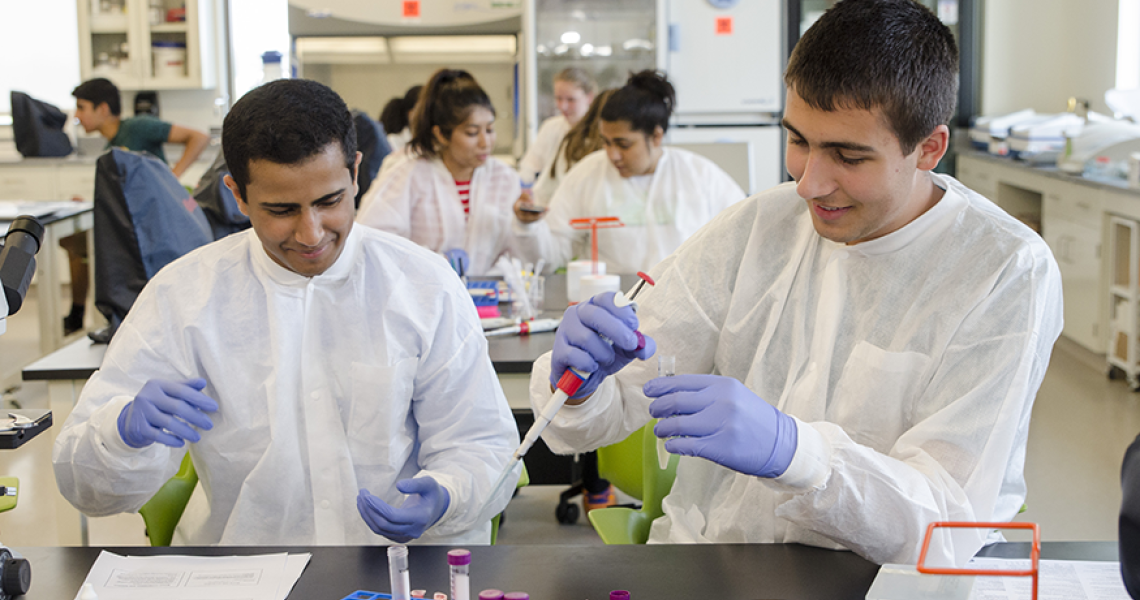On a hot summer afternoon at the George Washington University (GW) Virginia Science and Technology Campus (VSTC) in Ashburn, a group of high school students sat in a classroom, learning how to use blood samples and DNA to positively identify a suspect in a crime case. What did you do this summer?
This year, the medical laboratory sciences (MLS) program at the GW School of Medicine and Health Sciences (SMHS) is hosting its first formal summer immersion program to Loudoun County high school students, those who have graduated and are entering college, and some students attending Northern Virginia Community College.
“Many of the students that we accept into the program have expressed interest in health and medicine related fields,” said Carmen Session, assistant director for admissions and enrollment services at SMHS. “This is an opportunity for them to get some great laboratory skills and learn about the different areas they can apply them in.”
The origin of the program actually came from the parents, explained Marcia Firmani, PhD, MSPH, program director for MLS and interim chair of the Department of Integrated Health Sciences at SMHS. “We received a lot of requests from parents and students for laboratory focused opportunities during the summer. We thought it would be a great opportunity to create a formalized program, and [it] also gave us an opportunity for outreach in our community in the Ashburn area.”
Prior to the formalized session, there had been some opportunity for students to observe lab techniques, but none as formalized and intensive as the summer immersion program has turned out to be.
“They aren’t walking away from the program as lab scientists, but they do get exposure to lab techniques and applied theory that they wouldn’t get in the standard high school biology laboratory courses,” Firmani said.
During the two-week sessions, students spend their days in the lab covering topics such as molecular techniques, developing clinical laboratory skills, and learning how to work with DNA and other types of biomedical samples.
The typical day begins at 9:30 a.m., with the program’s 48 students divided into two groups of 24. Each session starts with a short lecture on the theory behind the chosen topic, and the rest is spent performing different techniques. In a given session, one group could start work on microbiology techniques and testing, while the other is doing hematology work; the groups then switch in the afternoon.
“It’s very lab intensive,” explained Firmani, “but, the faculty have loved engaging with the students, who have been very inquisitive. It’s been rewarding for the students and for the MLS faculty and staff working in the program.”
Near the end of the session, students worked on group projects that they presented to their classmates as well as their parents.
Reactions from students and parents has been overwhelmingly positive, Firmani said. “We modified our sessions based on the feedback that we got from the students, which has been incredibly helpful.” Based on early reviews, she added, MLS faculty hope to make this program an annual opportunity at VSTC.
